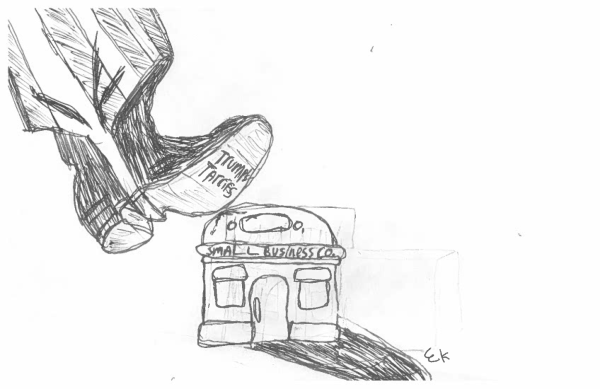Heating Issues Impact Learning

Marta Ambrosetti IT via thenounproject
“The extreme fluctuations in temperature make it harder to concentrate during class.” Image source: Marta Ambrosetti IT via thenounproject
We believe that school-wide maintenance issues, particularly regarding the heating systems and pool, should be more swiftly and effectively resolved.
Students have noticed fluctuating temperatures across the school. Certain classrooms, such as science teacher Karla Seery’s room, are noticeably colder, while classrooms in the English hallway are significantly warmer. Sometimes temperatures in the classrooms of the English wing vary widely over the course of a day.
“Each teacher has a 4º sub control of their room that they can adjust with the room’s thermostat,” Supervisor of Facilities and Grounds Brian Koss wrote. “Some teachers have asked to be warmer or cooler and we try to accommodate them, within reason. Similar to any program, we encounter glitches and bugs every now and then that we address right away.”
The extreme fluctuations in temperature make it harder to concentrate during class. Both English teacher Carrie Shapiro and social studies teacher Pam Ogilvy have had mechanical problems impact their classes.
In the weeks leading up to winter break, Ogilvy continuously prompted her students to bring their coats to class.
Ogilvy says the heating problems have been an issue for the past two years. This year, however, has been the worst.
“The building is divided into sections; whatever panel heated my section was down,” Ogilvy said.
Shapiro’s classroom recently had no heat for a two-week period, forcing her to take her classes to the library.
Whenever there is a problem with heating in her classroom, Ogilvy emails Koss. She says the response is always quick, but the actual correction of the problem may take time.
For example, the extreme cold in Ogilvy’s room before winter break was not resolved for about three weeks.
English teacher Josh Davis reports that he has emailed Koss six times this year concerning the temperature in his room being either too hot or too cold.
Koss explained how the school handles these issues.
“We occasionally have mechanical failures where pieces and parts need to be replaced in the individual units,” he wrote. “Some of these mechanical failures can be fixed right away and some take longer since we have to order parts and wait for them to come in.”
“To give you an idea of scale, most homes only have one heating system, each room at the High School has a heating unit and large spaces have several,” he added. “We have over 100 units just in the High School and this doesn’t include [the] larger pieces of equipment such as the boilers, pumps, rooftop units and heat recovery units.”
While the high school is larger than a family home, there are plenty of buildings even larger than BHS that seem able to maintain consistent temperatures.
When certain classrooms are too cold or too warm, it can become distracting for students. Additionally, instructional time is shortened when students must go to their lockers to retrieve jackets and coats.
Science teacher Karla Seery would also like her room to be warmer.
“I think it’s too cold… I have a thermostat, but it doesn’t do anything,” she said.
“I do think there’s too big of a difference [in temperature across classrooms],” she said. “I don’t think kids should have to bring coats [to class].”
Additionally, the pool has experienced maintenance problems this season including broken tiles, extremely high temperatures and humidity. Members of the swim team feel that the high temperatures have interfered with their practices.
According to administrators, the conditions of the pool do not pose any safety or health issues, and when issues do appear, they are corrected as soon as possible. There are planned improvements, but as of yet no official timeline.
Though we appreciate the administration’s efforts to maintain BHS’s internal environment, there is always room for improvement. Currently, temperature inconsistencies across classrooms as well as pool maintenance issues are extreme enough to affect students’ learning and swimmers’ performance. We hope that whenever these issues appear, they can be addressed more quickly and effectively.











